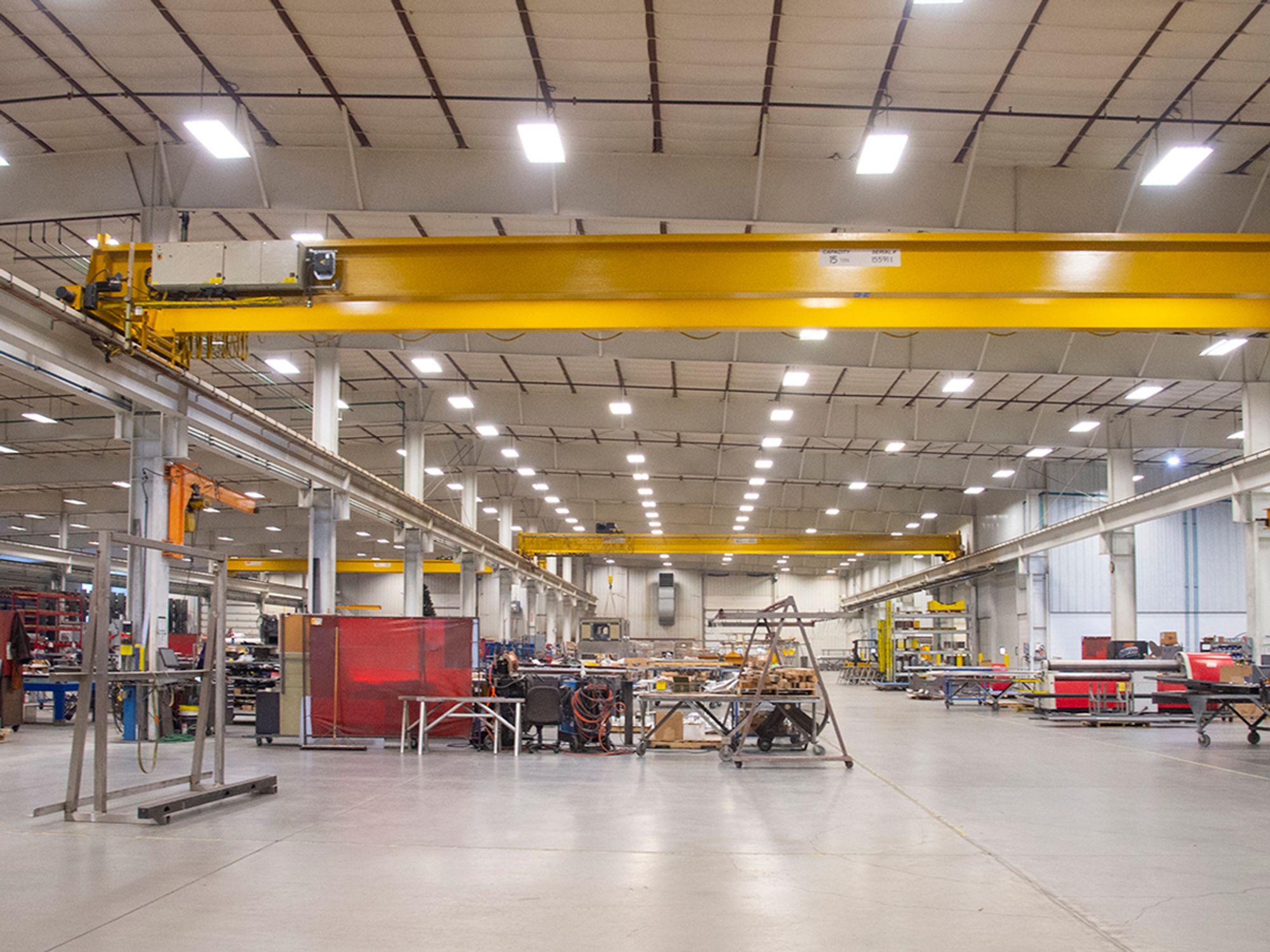Overhead cranes in general industry

- Overhead and gantry cranes use a horizontal bridge, trolley, and hoist to move materials.
- OSHA regulates overhead cranes at 29 CFR 1910.179 but does not give much information about operator training.
A crane is designed to lift and lower a load and move it horizontally. Overhead and gantry cranes have a horizontal bridge across which a trolley and hoist travel. Materials being moved by overhead cranes are attached to a hoisting mechanism on the trolley.
These cranes are useful in general machine shops, fabricating assemblies, printing operations, and warehousing. They can be purchased “as is” or custom-built by the manufacturer.
Scope/Who must comply
The Occupational Safety & Health Administration (OSHA) regulates overhead cranes at 29 CFR 1910.179. The OSHA standard applies to overhead and gantry cranes, including semi-gantry, cantilever gantry, wall cranes, storage bridge cranes, and others having the same fundamental characteristics. These cranes are grouped because they all have trolleys and similar travel characteristics.
The standard covers the safe operation of overhead- and gantry-type cranes by setting down design criteria for manufacturers, as well as the safe procedures employers must follow pertaining to crane and rope inspections, equipment maintenance, load handling, and operator training.
Training
OSHA’s overhead crane standard does not provide much detail about crane operator training. The standard simply states at 1910.179(b)(8), “Only designated personnel shall be permitted to operate a crane covered by this section.” OSHA defines designated as “selected or assigned by the employer or the employer’s representative as being qualified to perform specific duties.”
OSHA clarifies in a November 8, 1999, Letter of Interpretation that the Agency would interpret “qualified” in light of operator-qualifications provisions of industry standards such as ANSI B30.2. In addition, although the 1910.178 powered industrial truck training requirements do not apply, employers may also find it useful to consult that standard when developing a training or evaluation program for “travel lift” operators.
